Cell fate roadmap of human primed-to-naive transition reveals preimplantation cell lineage signatures
- PMID: 35672317
- PMCID: PMC9174176
- DOI: 10.1038/s41467-022-30924-1
Cell fate roadmap of human primed-to-naive transition reveals preimplantation cell lineage signatures
Abstract
Human naive pluripotent stem cells offer a unique window into early embryogenesis studies. Recent studies have reported several strategies to obtain cells in the naive state. However, cell fate transitions and the underlying mechanisms remain poorly understood. Here, by a dual fluorescent reporter system, we depict the cell fate dynamics from primed state toward naive pluripotency with ALPG activation followed by the activation of OCT4-distal enhancer. Integration of transcription profiles and the chromatin accessibility landscape reveals the appearance of primitive endoderm and trophectoderm signatures in the transitioning subpopulations, with the capacities for derivation of extra-embryonic endoderm and trophoblast stem cell lines, respectively. Furthermore, despite different fluorescent dynamics, all transitioning intermediates are capable of reaching the naive state with prolonged induction, showing their developmental plasticity and potential. Overall, our study describes a global cell roadmap toward naive pluripotency and provides hints for embryo modeling-related studies.
© 2022. The Author(s).
Conflict of interest statement
The authors declare no competing interests.
Figures

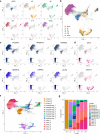
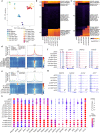
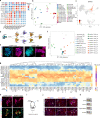
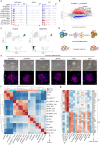
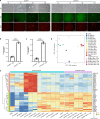
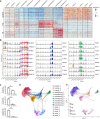
Similar articles
-
Modeling human pregastrulation development by 3D culture of blastoids generated from primed-to-naïve transitioning intermediates.Protein Cell. 2023 May 8;14(5):337-349. doi: 10.1093/procel/pwac041. Protein Cell. 2023. PMID: 37155315 Free PMC article.
-
Naïve human pluripotent stem cells respond to Wnt, Nodal and LIF signalling to produce expandable naïve extra-embryonic endoderm.Development. 2019 Dec 16;146(24):dev180620. doi: 10.1242/dev.180620. Development. 2019. PMID: 31740534
-
A computational model for understanding stem cell, trophectoderm and endoderm lineage determination.PLoS One. 2008;3(10):e3478. doi: 10.1371/journal.pone.0003478. Epub 2008 Oct 22. PLoS One. 2008. PMID: 18941526 Free PMC article.
-
Using human pluripotent stem cells to dissect trophoblast development.Curr Opin Genet Dev. 2023 Dec;83:102126. doi: 10.1016/j.gde.2023.102126. Epub 2023 Oct 7. Curr Opin Genet Dev. 2023. PMID: 37812907 Review.
-
Stem cells and lineage development in the mammalian blastocyst.Reprod Fertil Dev. 2007;19(1):111-8. doi: 10.1071/rd06125. Reprod Fertil Dev. 2007. PMID: 17389140 Review.
Cited by
-
Regulation of Embryonic Stem Cell Self-Renewal.Life (Basel). 2022 Jul 29;12(8):1151. doi: 10.3390/life12081151. Life (Basel). 2022. PMID: 36013330 Free PMC article. Review.
-
α-Ketoglutarate promotes trophectoderm induction and maturation from naive human embryonic stem cells.Nat Cell Biol. 2025 May;27(5):749-761. doi: 10.1038/s41556-025-01658-1. Epub 2025 Apr 23. Nat Cell Biol. 2025. PMID: 40269259 Free PMC article.
-
Current Status of Synthetic Mammalian Embryo Models.Int J Mol Sci. 2024 Nov 29;25(23):12862. doi: 10.3390/ijms252312862. Int J Mol Sci. 2024. PMID: 39684574 Free PMC article. Review.
-
Chromosome number alterations cause apoptosis and cellular hypertrophy in induced pluripotent stem cell models of embryonic epiblast cells.Biol Open. 2025 Jan 15;14(1):BIO061814. doi: 10.1242/bio.061814. Epub 2025 Jan 24. Biol Open. 2025. PMID: 39851179 Free PMC article.
-
Discordance between chromatin accessibility and transcriptional activity during the human primed-to-naïve pluripotency transition process.Cell Regen. 2023 Nov 8;12(1):35. doi: 10.1186/s13619-023-00179-2. Cell Regen. 2023. PMID: 37938437 Free PMC article.
References
Publication types
MeSH terms
LinkOut - more resources
Full Text Sources
Other Literature Sources
Molecular Biology Databases
Research Materials

